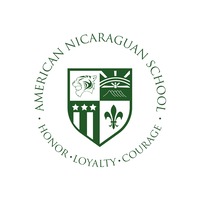Our projects are being developed in the following locations
San Cayetano community
Situation of the community
The community was founded around the year 1900 and is located about 51 kilometers to the southwest of the city of Managua, on the road to Masachapa. According to the 2005 national census, it has the following characteristics:
- 1 600 inhabitants: 689 (50.48%) men and 676 (49.52%) women.
- Land area of 4 km 2 with a population density of 400 hab / km 2 .
- At the time of the census, there were 316 houses, of which 281 were occupied.
- More than 5 people per household on average, a large number of homes there is some degree of overcrowding.
- 77.4% of households in poverty or extreme poverty in quadrant 1 of the municipality, where is San Cayetano.
According to the diagnosis made by Habitat for Humanity Nicaragua with organizations and community leaders in 2011, has the following characteristics:
- 282 occupied dwellings surveyed.
- In 22% of these homes two or more households, overcrowding signal meet.
- Several homes in poor condition requiring total replacement.
- Lack of sanitary sewer, existence of latrines in poor condition, poor management of waste household and gray water from the population, which deteriorates the environmental and sanitation conditions in the community as well as the streets pouring in these the wastewater.
Intervention Habitat for Humanity Nicaragua
From the diagnosis, a community plan was developed to address the most important issues. One of the measures was the development of a housing improvement project. In support of this plan, Habitat for Humanity Nicaragua implemented since 2013 a program to improve housing, which in June 2016 had built in three phases, 105 basic modules progressive, called "seed houses": 24 in phase 1 , 42 in phase 2 and phase 3 39.
From June 2015 to January 2016 Habitat for Humanity Nicaragua, with support from the programs Women Build and Cars for Homes Habitat for Humanity International, 100 ecobaños were installed to as many families, 89 of which were for families and they had received a seed housing. This increased the impact on improving their housing conditions and 31% sanitation coverage was achieved in the community. During 2017 we have built 51 ecobaños in the community ..
In these works, especially in the construction of homes, they participated national and international volunteers from Habitat.
These families also have benefited from services access to housing, where they are trained in Safe Housing, Healthy Housing, Housing Law, Financial Education and Legal Security in ownership of property.
Gutiérrez Norte
Situation of the community
It is located 10 km to the east of San Cayetano. According to data from the census taken by the city government and community leaders in 2015, it has the following characteristics.
- 2974 inhabitants, 48% (1,426) are men and 52% (1548) women.
- 39% are 16 or less, 42% are between 17 and 49, and 19% are 50 or older.
- There are 737 housing units, of which 320 (43%) have dirt floors, 732 (99%) zinc roofs, 545 (74%) have block walls and 175 (24%) wooden walls. However, most of these materials are in poor condition with serious constructive deficiencies.
According to the 2005 national census and the information gathered by Habitat in the community, it has the following characteristics:
- It is located in quadrant 1 San Rafael of the South, where 77.4% of households are in poverty and extreme poverty.
- Only 48% of the economically active population has permanent and formal employment.
- Many work, temporary jobs and small businesses in the informal sector: small factories lime, cut coffee between December and February, cutting cane from November to March. Small crops of survival, especially vegetables sold in the municipal head. There are also about 23 carpentry workshops that manufacture rustic furniture to sell in the capital, and women engaged in the production and sale of baked tortillas, a specialty of the area.
- In 2015, ENACAL inaugurated a drinking water project, where a new well drilled and installed 59 new household connections. This system serves the community for 17 hours every other day.
- There is a strong community leadership, which can be an important support for any project.
- There is no drainage system or sewer in the community, virtually all households use traditional latrines, many in poor condition, which pollute the groundwater and aquifers in the area.
Intervention Habitat for Humanity Nicaragua
In 2016 the mayor initiated a project of 150 homes in several communities in the municipality. Habitat for Humanity Nicaragua agreed to provide US $ 600 per household, and installing ecobaños improve sanitation in 59 of those homes, a project that is currently running.
Habitat for Humanity Nicaragua made a diagnosis of risks using the methodology and raising PASSA risk map with community leaders.
Participating families in housing and sanitation projects are also receiving training in self-construction, use and maintenance of ecobaños, Housing Law, Financial Education, and Housing SJTP Segura, in addition to the process Healthy Housing sanitation.
Communities where we collaborate in housing projects of the Municipalities
- San Rafael del Sur
- San Rafael del Norte
- San Juan de Limay
- San Nicolás
- Mozonte
- San Fernando
- El Jícaro













